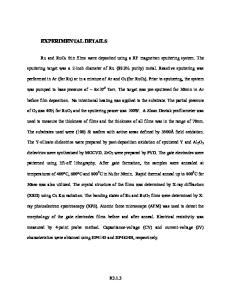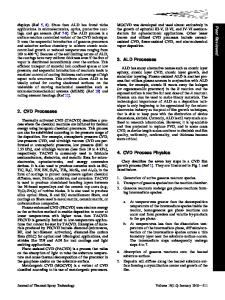Chemical Vapor Deposition of Ru and RuO 2 for Gate Electrode Applications
- PDF / 104,788 Bytes
- 6 Pages / 612 x 792 pts (letter) Page_size
- 45 Downloads / 317 Views
Chemical Vapor Deposition of Ru and RuO2 for Gate Electrode Applications Filippos Papadatos, Spyridon Skordas, Zubin Patel, Steven Consiglio, and Eric Eisenbraun University at Albany Institute for Materials, Albany, New York 12203 ABSTRACT In this work, Ru and RuO2 films have been investigated for potential applications in emerging CMOS gate electrode and memory capacitor bottom electrode applications. Films were deposited on SiO2 using chemical vapor deposition (CVD) and low power plasma assisted CVD (PACVD) in a 200-mm wafer deposition cluster tool using a metal beta-diketonate precursor [Bis (2,2,6,6-tetramethyl-3,5-heptanedionato) (1,5-cyclooctadiene) ruthenium (II)]. Hydrogen and oxygen were employed as the reactive gases to deposit, respectively, Ru and RuO2, over a wafer temperature range from 320°C to 480°C. The resulting film properties were analyzed using cross-sectional scanning electron microscopy (CS-SEM), four point resistance probe, x-ray photoelectron spectroscopy (XPS), Rutherford backscattering spectrometry (RBS) and x-ray diffraction (XRD). Both Ru and RuO2 films could be deposited with minimal carbon concentration (550°C) to yield pure, low resistivity films [4, 5, 6,]. High processing temperatures potentially become a significant limitation with respect to “gate last” processing as well as limiting the use of embedded capacitors in advanced IC architectures. Accordingly, this work was undertaken not only to determine the feasibility of depositing Ru and RuO2 films using MOCVD and PACVD at low processing temperatures (i.e. 440°C) favored the formation of RuO2. Very low wafer temperatures (
Data Loading...











